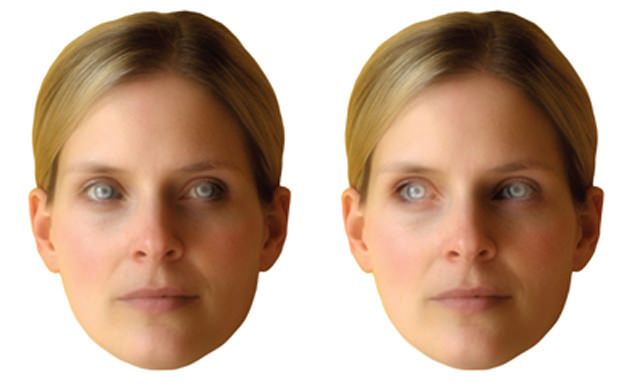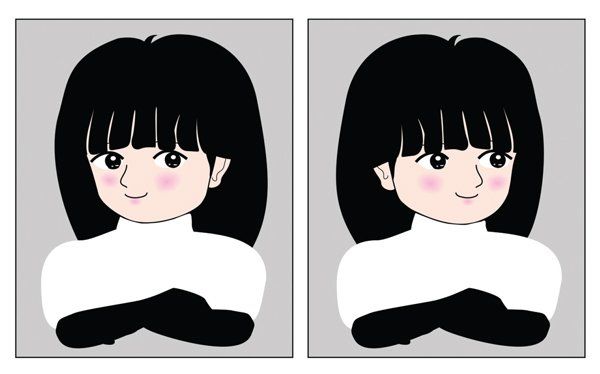On my daily Internet browsing, I stumbled upon this very interesting article (in Spanish) about visual perception by the great Antonio Martínez Ron (author of the blog 'Fogonazos') where they talk about the following visual illusion game. It's called 'The Ghostly Gaze' and it was awarded second prize in the 2008 Best Illusion of the year contest.

You might be asking why I bring your attention to this illusion. The answer is quite interesting for miniature painters in my opinion.
One of the things I usually talk about in my painting classes is the importance of the perspective of the viewer (subject) as opposed to the miniature (object). There is an important relation between the sizes of the subject and the object as well as the distance between the object to the light source that should be carefully considered when painting. I think this example perfectly illustrates how the same image can be completely different if these parameters change.
On the first photo you can see this strange woman and her twin, with slight shadows changed from the original, looking right at you.
However, if we shrink the photo, it seems like the twins now look at each other.

Check it out for yourselves in the page where the Ghostly Gaze illusion is explained in detail (you can gradually change the size of the image to see the effect of resizing step by step).
There are many things happening in the brain with regards to this illusion. You can read more about this illusion in this article from the author, Rob Jenkins from the Psychology Department of the University of Glasgow. But what I wanted to point out is the importance of the shadow in the side of her eyes. Having those very light-coloured eyes, the shadow to the side can be distinguished when the face is big, but not as much when the face is small. This simple shadow that works on a larger scale, leads us to think that the eyes are looking elsewhere when the scale is smaller. The image remains the same, but the differences in size and perspective fools our brain.
What's the moral of the story? This game shows why you can't go into too much detail when painting smaller scales. It's not because of the size (there's always ways of thinning your brushstrokes even more). It's because some things will just not work in smaller sizes. That's why we would never paint an iris on miniatures smaller than 54mm. But not only irises, many other things!
How far into details should we go to avoid fooling our brains? It's one of the magics of miniature painting. I'm afraid the solution is trial and error!
In this other photo also from the article by Antonio Martínez Ron we can see how our brain knows perfectly how to detech the position of the eyes and the direction where they are looking, but we can fool our perception with just a couple of tricks.

In this other image, by Akiyoshi Kitaoka, we can see how in the same image just reversed to the right except for the eyes of the girl that have been copied exactly, one appears to be looking at us and the other seems to be looking to the right. The details surrounding the eyes are essential for our brain to determine one thing or another. This is something we need to dominate if we want our miniatures to make sense!
So never forget to change your perspective. ;)
2 comments:
Wierd!!!! and great fun. One Thing I´ve noticed..if you Keep fixed on only one of the twins faces the stare keeps looking striaght at you.
I´ve printed this one
http://gif.neuralcorrelate.com/finalists_2008/jenkins/ghostly_gaze_illusion_text.pdf
and on A4 size it works very well
Cool!!! It's really interesting, right? :)
Post a Comment